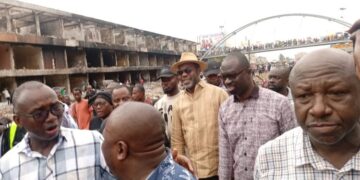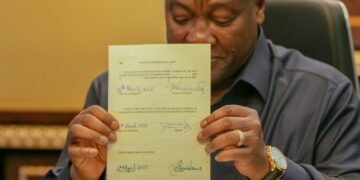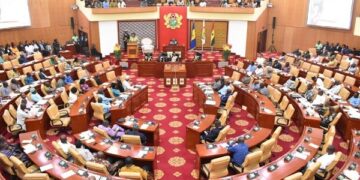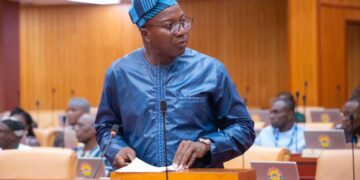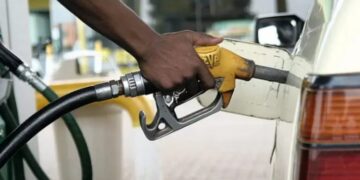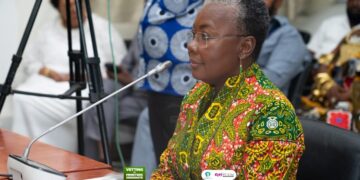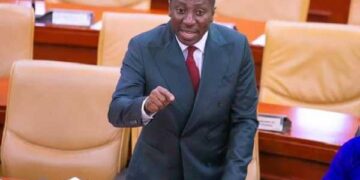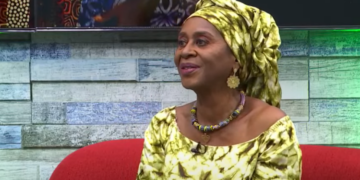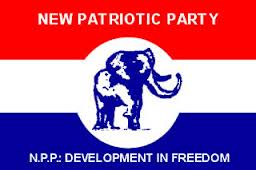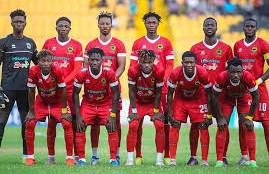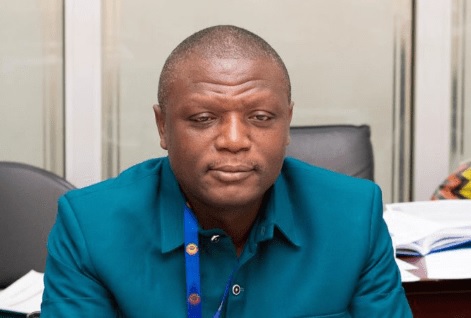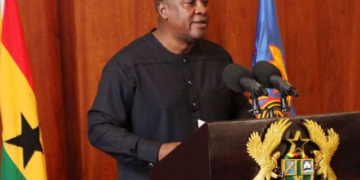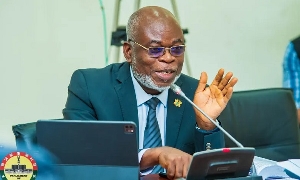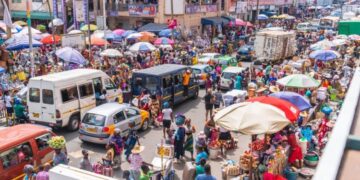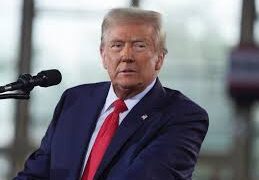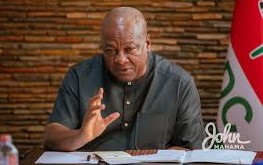Earlier this week, the world Bank Country Director, Pierre Frank Laporte rendition on Ghana’s energy sector mounting debt generated a lot of furor about the culpability of some regimes in managing Power Purchase Agreement (PPAs) with the Independent Power Producers (IPPs). He indicated that Ghana’s energy sector debt is a major contributor to her current economic woes.
He indicated that the PPAs were not only expensive, but the rates and prices were wrong as well as the contractual terms and arrangements were also bad.
What does that mean?
Let me attempt to provide a practical explanation. In most of the PPAs, the government took the responsibility of providing fuel for some of the power plants. Therefore, anytime government was unable to provide fuel for the plants, they will not generate power, but government still had the obligation to pay them because of the ‘Take or Pay’ clauses. Take or pay contract is not necessarily bad, especially in the energy sector where the capital requirements are huge. But when you sign such expensive contracts without any clause assigning the plant to you at the end of certain period, then there is a problem. Of all the PPAs signed only Ameri and the Tema LNG facility had clauses. Ameri is fully owned by Ghana now.
Secondly, Ghana signed a contract with AMERI Energy for $510 million for 250MW power plant at the same time Egypt signed a contract to build a 1,800MW power plant at a total cost of $1.3 billion. It meant that Egypt was paying $722,222.00 dollars for 1MW while Ghana was paying $2.04million for 1MW of power.
Because of the current arrangements, the government is unable to sign new cheaper contracts and held hostage in renewing the existing plants just to keep the lights on. Hence, the government is hemorrhaging just to meet its obligation to the IPPs.
These are the issues that Frank Laporte was lamenting about.
HOW HAS GHANA MANAGED ITS ENERGY SECTOR?
Many would recall that during President Kufour Administration, Ghana experienced Dumsor for few months. As a result, there was massive investments in the energy sector using Ghana’s first Euro Bond ($700 million dollars in 2007) as captured in the first budget of NDC government in 2009 as follows:
• $286 million to help VRA in their power generation
• $134 million to ECG to help in their power distribution
• $54 million for the Bui Dam project
• $31 million for government equity contribution in the west Africa gas pipeline project
Even though most of these investments were still under execution by the time the Kufour Administration left power, the installed capacity by the end of 2008 was 1981MW. However, most of these investments were delayed and the NDC government did not take delight in the energy sector nor put in new investments until Dumsor struck in 2011 and were to continue until 2017 when we saw the end of the Dumsor era. (Mahama would have ended ‘dumsor’ if NDC was retained-Ofosu Ampofo, 2nd March, 2017 Ghanaweb and other portals).
During the 4years of Dumsor, the NDC government signed many Power Purchase Agreements (PPAs) estimated to be about 40 with the Independent Power Producers (IPPs) while neglecting GRIDCO transmission lines which equally needed investments. The number of PPAs and the agreed terms are the reasons for the current discussions.
In the gas sector, the previous administration must be commended for the Ghana Gas plant and the procurements of the FPSOs which significantly impacted positively in the gas sector despite the furore about its cost. However, all these gains have been negated by the expensive PPAs in the sector to an extend that Ghana is not benefiting from its equity share in Sankofa and Jubilee fields. Ghana’s equity share has been pegged at zero by Public Utilities Regulatory Commission (PURC) in the tariff build up to keep electricity prices down and affordable for Ghanaians.
It is important to note that at the beginning of the crisis, the peak demand for electricity in Ghana at the time was less than 2500MW. In addition, there is always a supply plan to guide the government about installed capacity and when to scale up. It was therefore unimaginable to comprehend why any government will sign ‘Take or Pay’ contracts to the tune of 5,083MW (installed capacity) at the time our peak demand was less than 2700MW according to the Energy Commission.
This means that the excess capacity of 2,300 MW had to be paid for the next 4-5 years compounding Ghana’s debt crisis. This has resulted in government paying over GH¢12 billion cedis and still counting for the excess capacity and other commitments in the sector. This amount could have been used for investments in renewable energy which is less costly as Pierre Frank Laporte indicated in his interview.
In addition, because most of these PPAs were dollar denominated, the depreciation of the cedi over the period has also compounded Ghana’s obligations to the sector.
HOW HAS THE AKUFO ADDO’S GOVERNMENT MANAGED THE SECTOR?
When the Akufo-Addo administration took over the reins of government in 2017, the energy sector was bedevilled with serious challenges, key among them was liquidity. The practice was that all the key players in the sector from fuel suppliers to generation to transmission and distribution had to wait for ECG to collect the tariff revenue before they pay all those in the value chain.
The reality is that till date, whatever ECG collects does not cover the total cost of the value chain in generating the electricity. Hence, the challenge has always been how to distribute what is collected. As a result, some players had to wait for several months before getting payment from ECG. This practice built up serious cross-sector debts among the key players in the sector. It was also difficult for them to plan because of the unreliability of the cashflows.
Upon several deliberations with key stakeholders in the sector, government established the Energy Sector Recovery Programme (ESRP) in May 2019 to be supervised by Inter-Ministerial Committee chaired by the then Senior Minister, Hon. Yaw Osafo-Maafo. Other members included Minister for Finance, Minister for Energy and Minister for Monitoring and Evaluation.
KEY ACHIEVEMENTS OF THE ESRP
• Establishment of the Cash Waterfall Mechanism (CWM) mechanism and Natural Gas Clearing House (NGC) mechanism. The implementation of the CWM came into effect in April, 2020 and that of the NGC came into effect in November, 2020. The financial models based on these mechanisms have brought enormous and predictable liquidity into the sector and ensured that tariff revenue collected each week is distributed equitable albeit, not covering full invoices, among the key players in the entire value chain. Consequently, the players do not have to wait for several months before getting paid as it used to be the practice.
• As a result of the liquidity in the sector, many of the energy sector agencies can now secure loans and do investments to improve their efficiency. For instance, GRIDCO whose transmission lines were obsolete and resulted in light outs whenever there was rain, had started investing in their transmission lines. Hence, the reason most part of the country does not experience lights out during rains.
• Implementation of the ESRP from May 2019 through December 2021 has reduced the original expected sector shortfall from USD 12.56 billion to USD 4.04 billion for the cumulative 2019-2023 period, primarily from USD 5.7 billion of disbursements from the ESLA PLC and MoF Sector Stabilization payments and delays to the commencement of gas supply contracts.
• Instituted the least-cost fuel procurement strategy.
• Adopted a competitive procurement policy for energy supply and service contracts, including placing a moratorium on unsolicited proposals.
• Relocation of the Karpowership barge from Tema to Takoradi, and conversion of the power barge from heavy fuel oil to cleaner natural gas. This project reduced fuel costs by USD 206 million as at year end 2021 (completion of Karpower relocation in Nov 2019).
• Converted some of the plants from liquid fuel to gas to reduce cost of operations.
• All the bills of the Ministries, Departments and Agencies (MDAs) that had been outstanding since 2012 were cleared by 2020. In addition, all MDAs were put into strategic and non-strategic MDAs to manage their bills.
• There are many more but just listing few achievements.
CONCLUSION
It is important to note that our energy sector is highly challenged and needs all onboard to find a solution to it. We must desist from playing football with our energy sector if we want to find a lasting solution to the current challenges.
Some uninformed persons also claim that the NPP government has not added a single Kilowatt of electricity to the national grid despite all the borrowings they have added to the national public debt. That is not true. On November 29, 2020 the then Senior Minister, Hon. Yaw Osafo-Maafo commissioned a 250MW hybrid solar plant at Bui Power Authority to add to the national grid. What the government will not do is sign another expensive PPAs for thermal plants.
The current excess capacity is suffocating the government and efforts are being made to renegotiate some of the PPAs and push back some of the plants that are yet to come on stream. This has resulted in some judgement debts as reported in June 2021 when government was slapped with a judgement debt of USD170 million for cancelling PPA with Ghana Power Generation Company.
The government, as part of the negotiations, must audit all the power plants in terms of the initial investments in those plants and the capital recoveries that have been accrued so far. It should provide the basis for the renegotiations of the PPAs.
Finally, some of the recommendations the World Bank Country Director listed in his interview including pursuing some reforms in the areas of tariff adjustments, addressing the transmission losses through improved infrastructure, and restructuring the PPAs to be consistent with the energy demands of the country to reduce a significant portion of the debts are already being done or are part of the roadmap towards addressing the sector challenges by the ESRP.
Mr. Habibu Adam
Senior Economist
Office of Senior Presidential Advisor
A legacy still unfolding: Happy 60th birthday to Patrick Awuah Jr.!
Happy 60th birthday to Patrick Awuah Jr.! the man whose dream was the "ashesi" of Ashesi. A visionary, a builder,...
Read moreDetails


